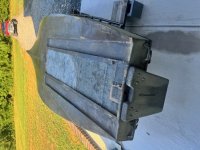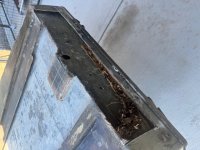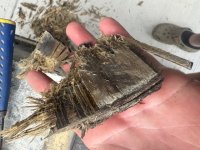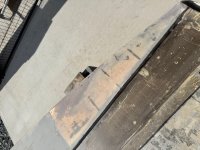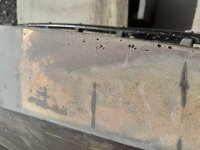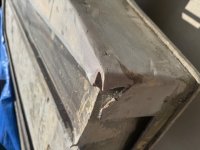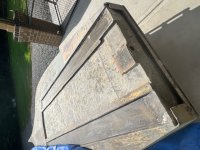Noah Shaver
Member
A little "progress" over the weekend. Man this balsa core sure is bonded well to the glass. I need to remove the balsa that is exposed in this picture and I plan to stop there. Any further repairs to the balsa core near the bow can be done from the floor side in the cockpit if needed.
Unfortunately I found several seams in the fiberglass floor that have cracked over the years. It looks like instead of glassing the boat floor from bow to stern they glassed it from port to starboard. There was very little overlap in these joints so some of them have gave way over the years. This is likely yet another possible point of water intrusion
I plan on marking each place there is a crack in the glass and fixing them all once I get the core replaced and the hull flipped back over. I will probably end up re-glassing the entire floor in the cockpit.
I had previously said that the floor fiberglass and the hull fiberglass appeared to be the same thickness, but now that I have popped through the floor fiberglass I can see it's very thin. It's just a layer of woven cloth directly on the core and then a layer of CSM on top of that on the floor side. That's it.
Now that I've gotten this deep into it I can tell that these older TDB's were very poorly constructed. Very thin glass and a multitude of points for possible water intrusion.
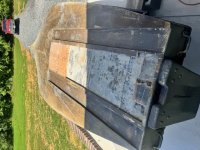
Unfortunately I found several seams in the fiberglass floor that have cracked over the years. It looks like instead of glassing the boat floor from bow to stern they glassed it from port to starboard. There was very little overlap in these joints so some of them have gave way over the years. This is likely yet another possible point of water intrusion
I plan on marking each place there is a crack in the glass and fixing them all once I get the core replaced and the hull flipped back over. I will probably end up re-glassing the entire floor in the cockpit.
I had previously said that the floor fiberglass and the hull fiberglass appeared to be the same thickness, but now that I have popped through the floor fiberglass I can see it's very thin. It's just a layer of woven cloth directly on the core and then a layer of CSM on top of that on the floor side. That's it.
Now that I've gotten this deep into it I can tell that these older TDB's were very poorly constructed. Very thin glass and a multitude of points for possible water intrusion.


